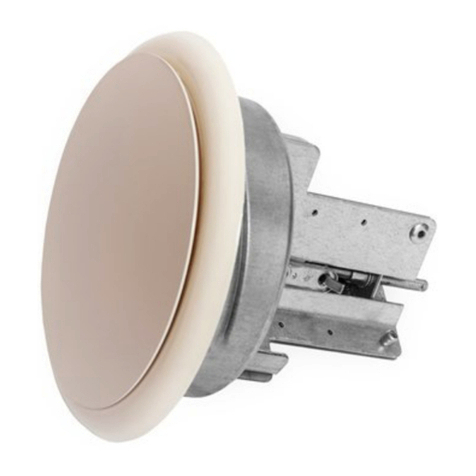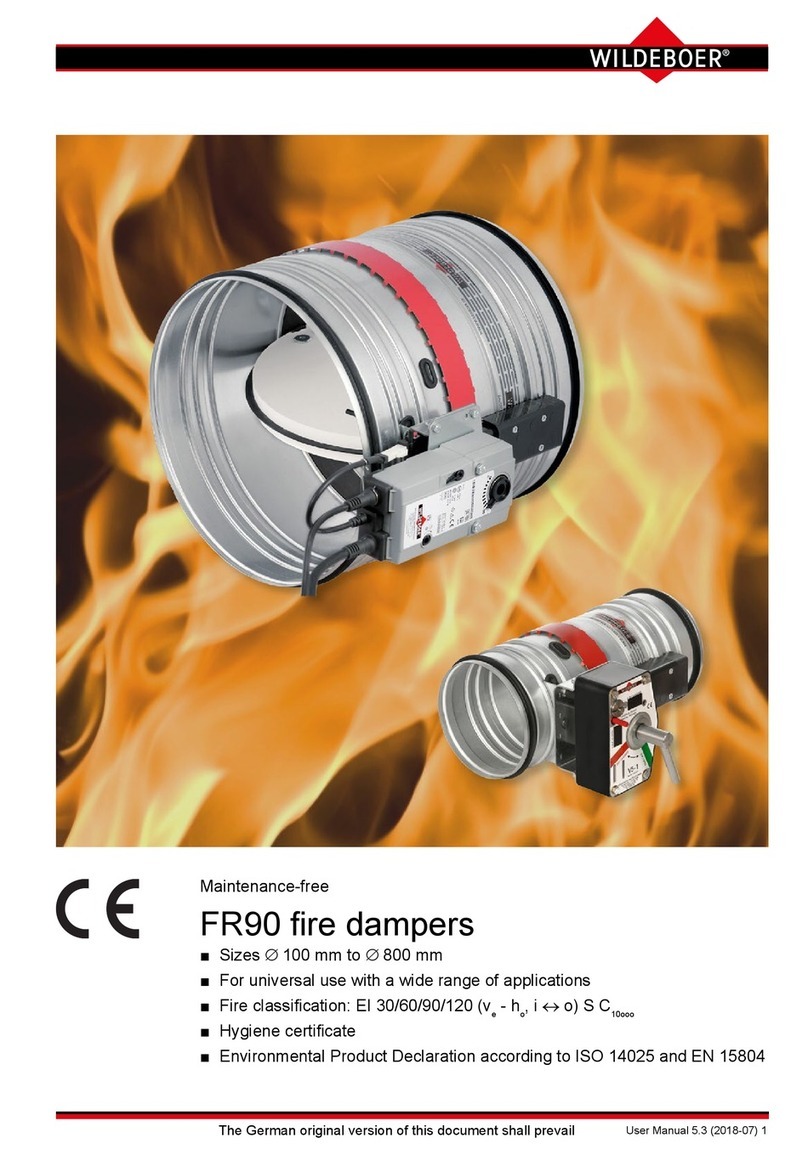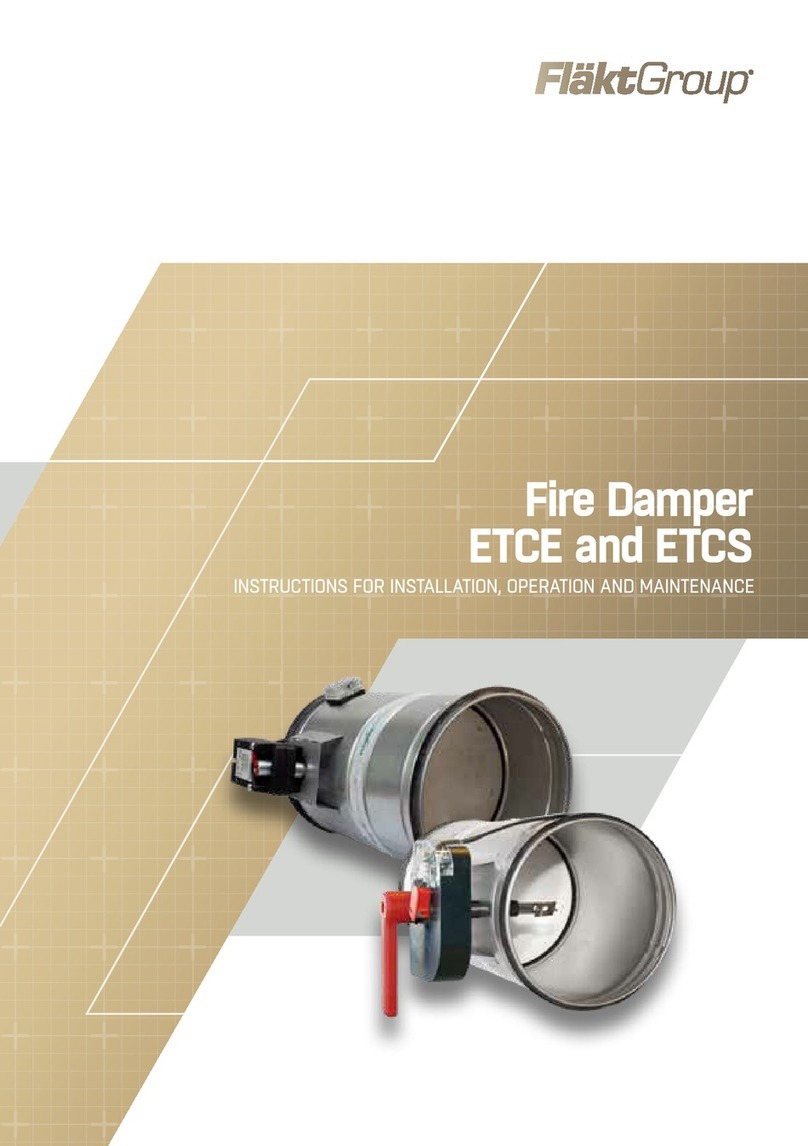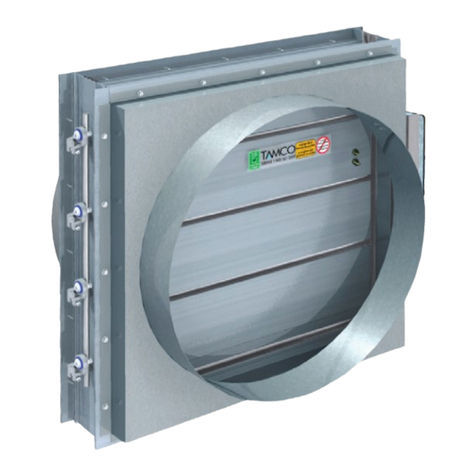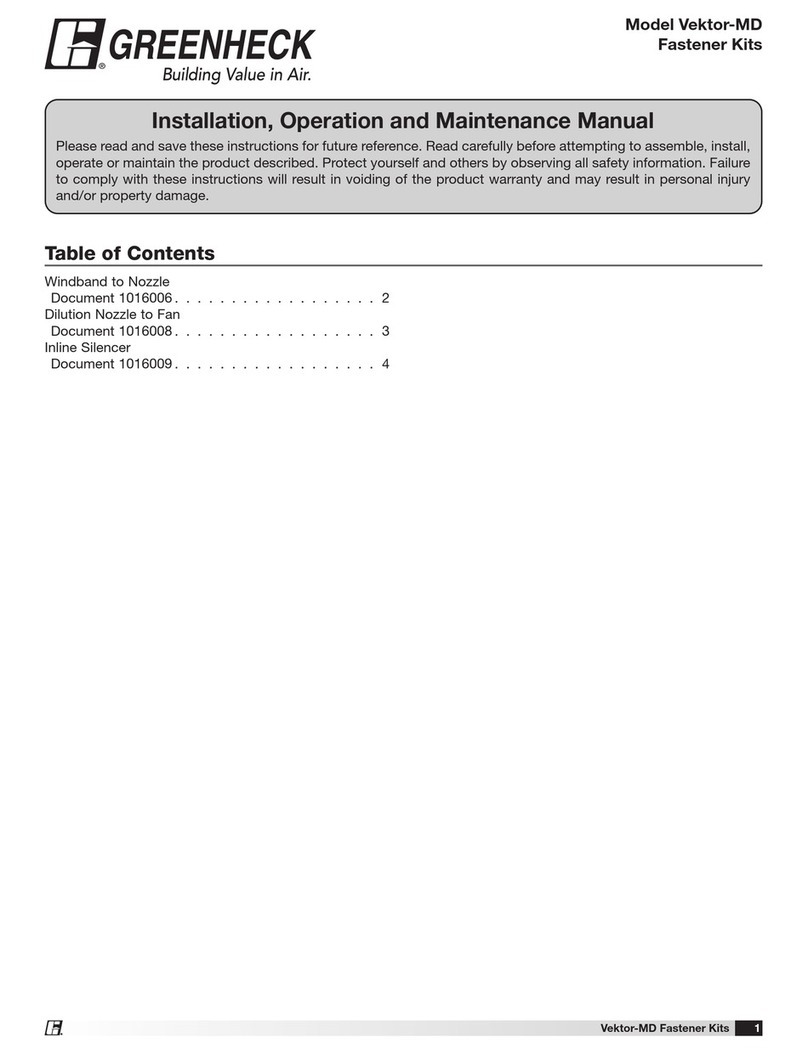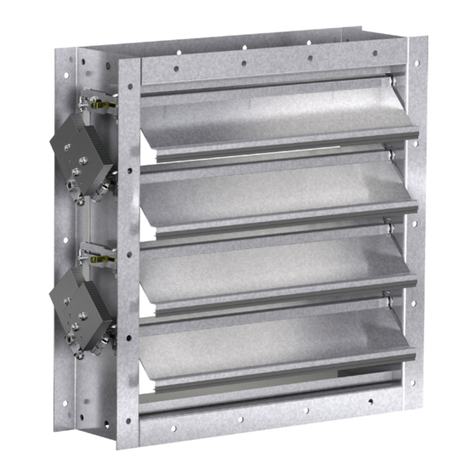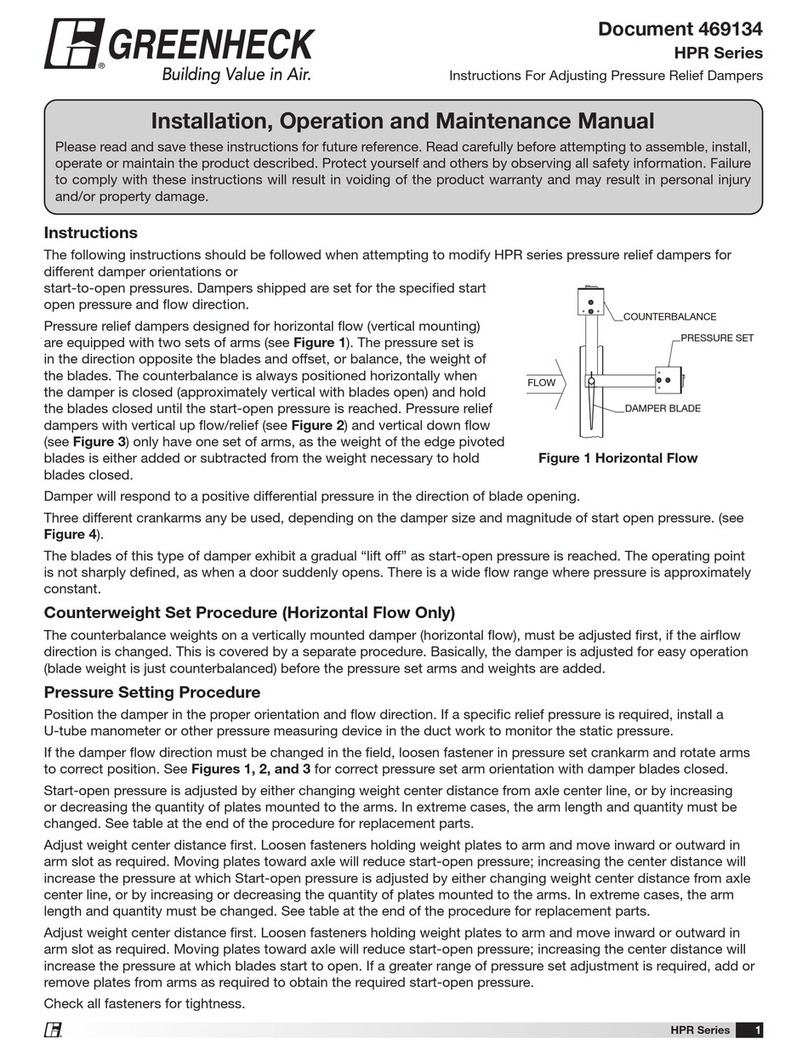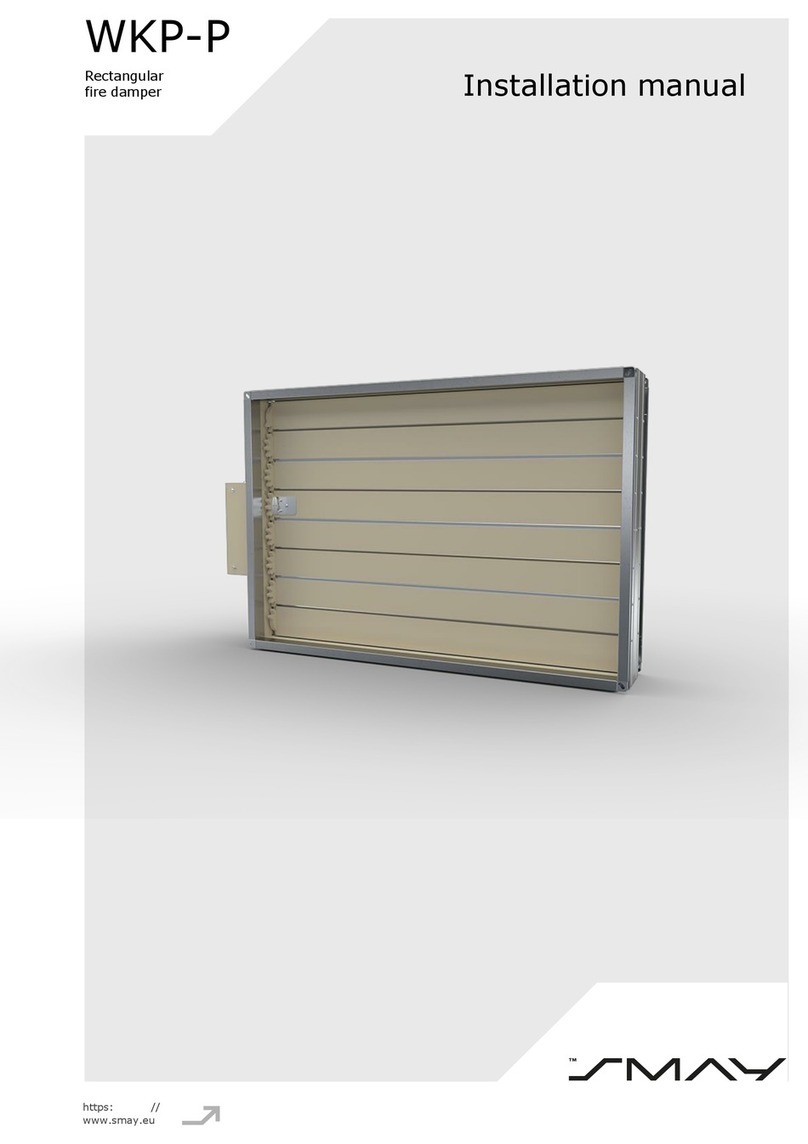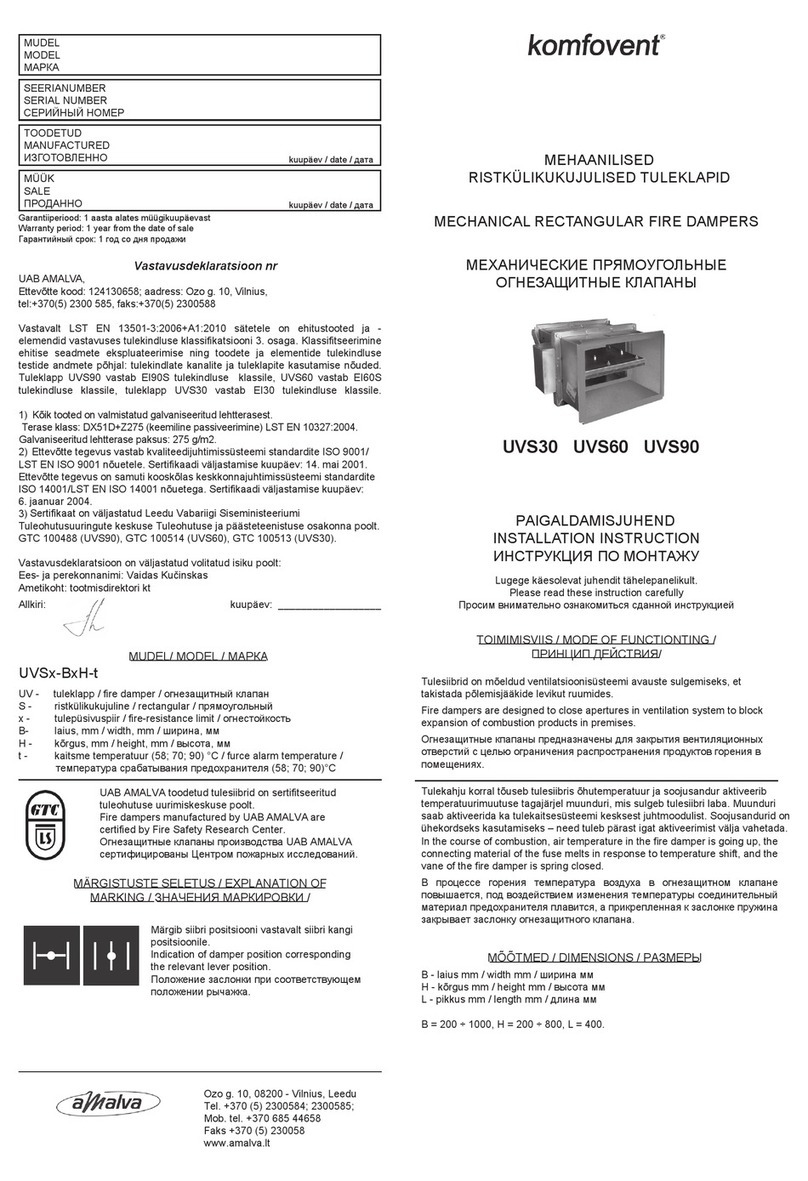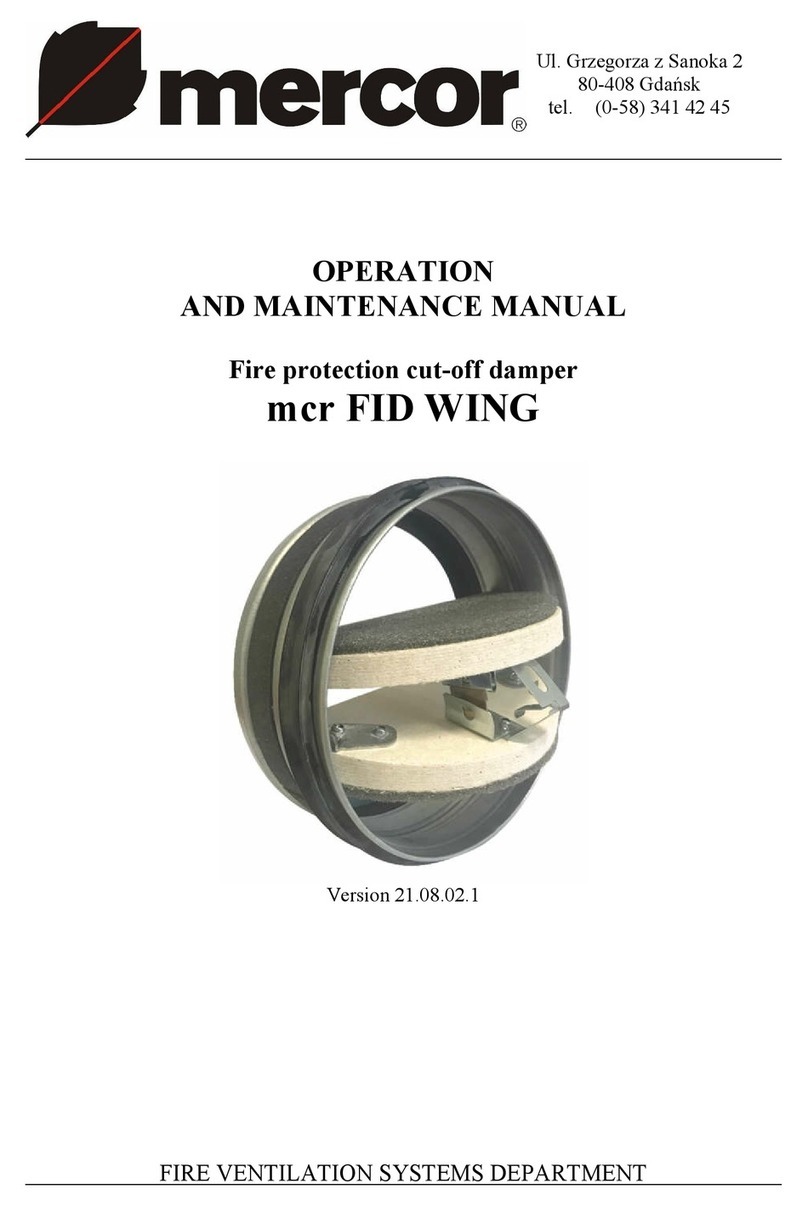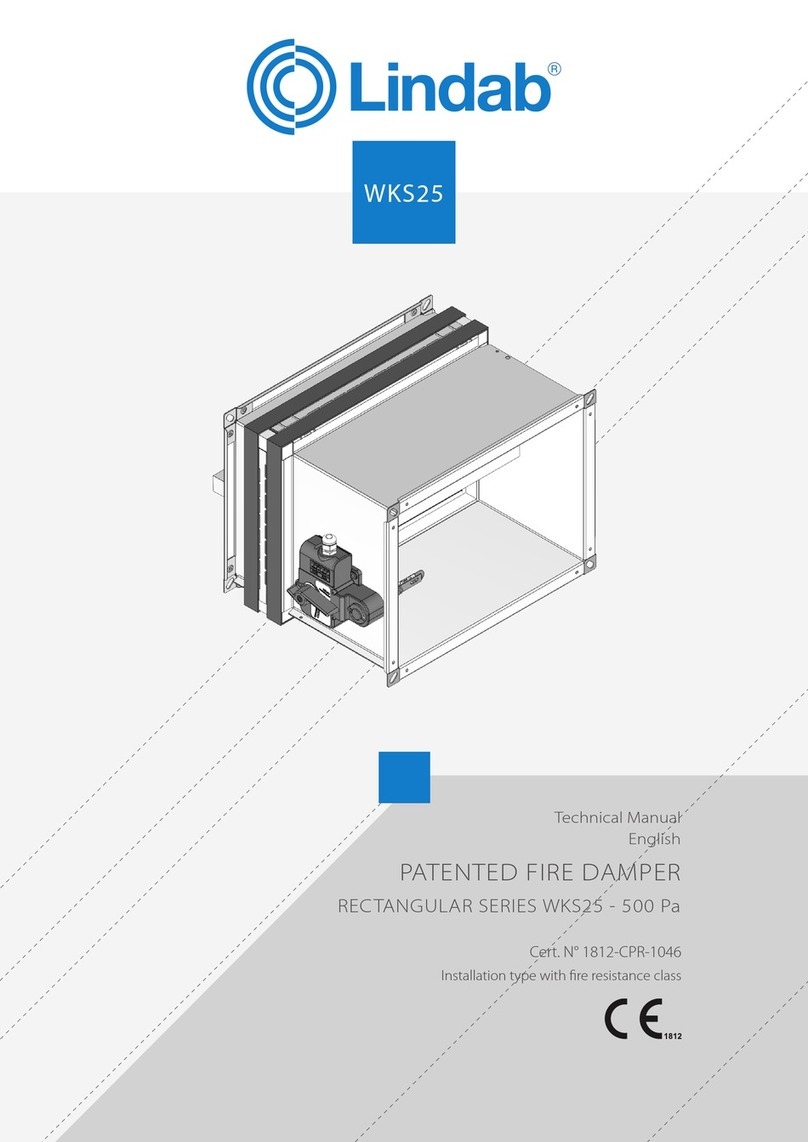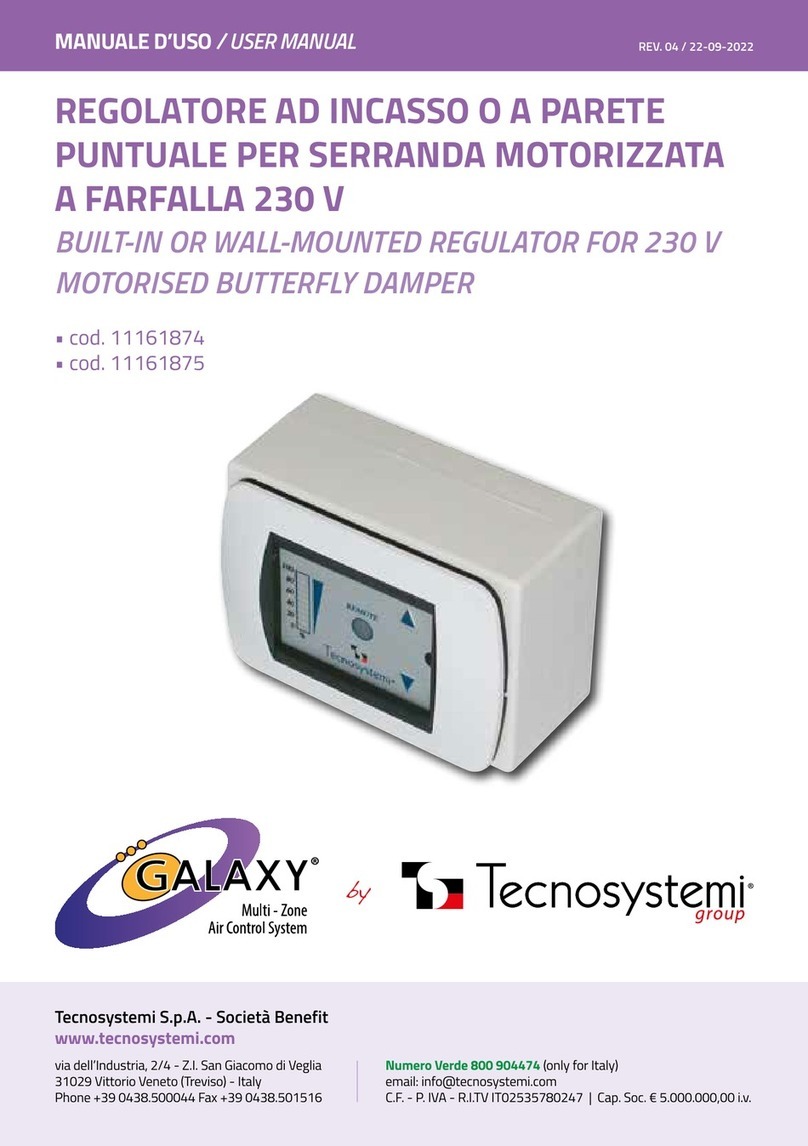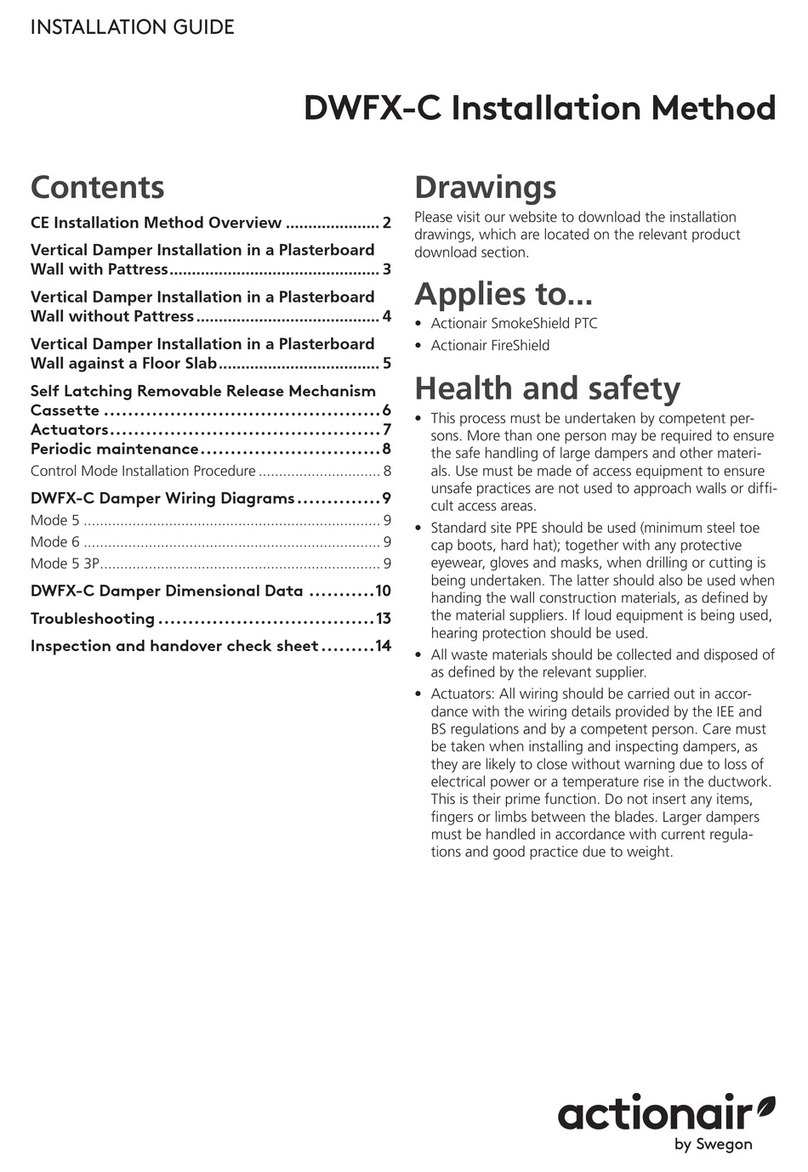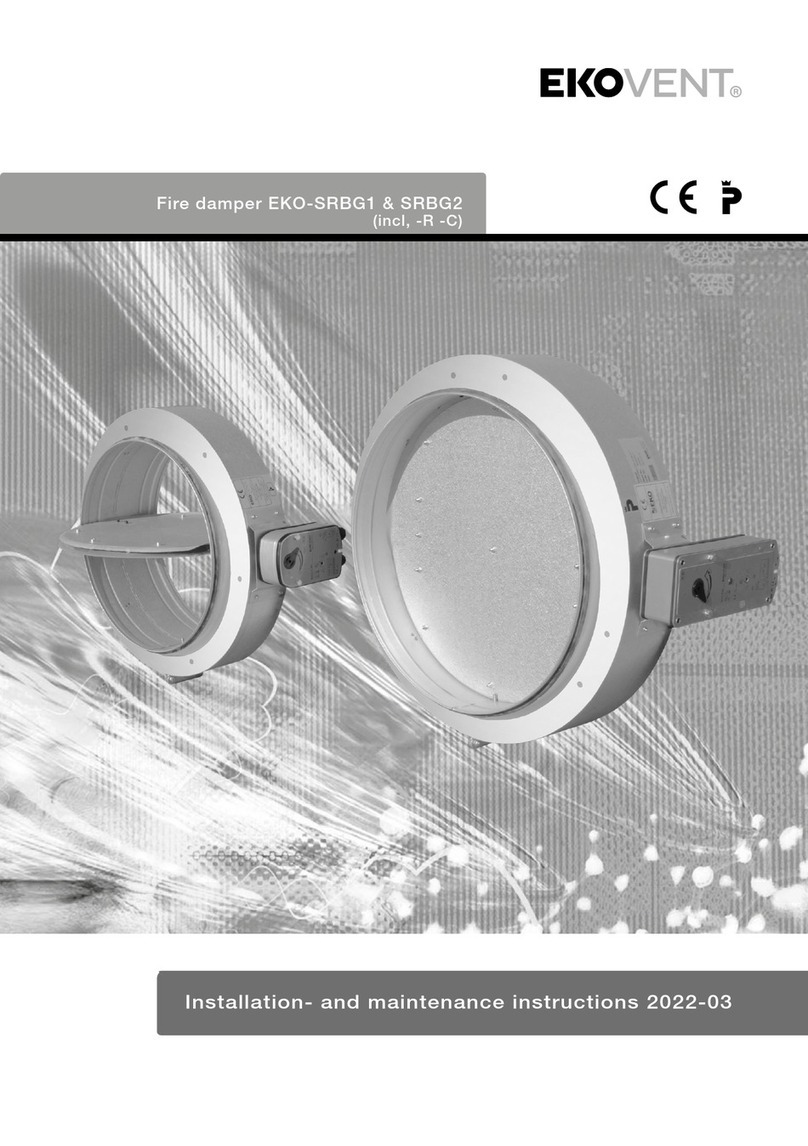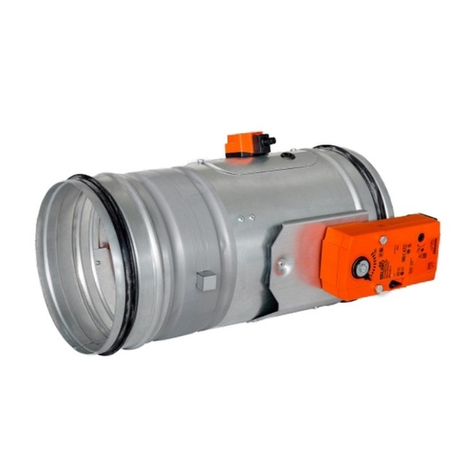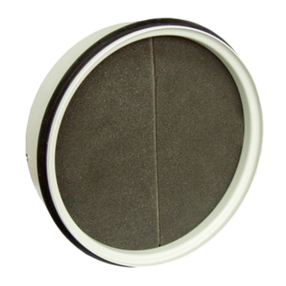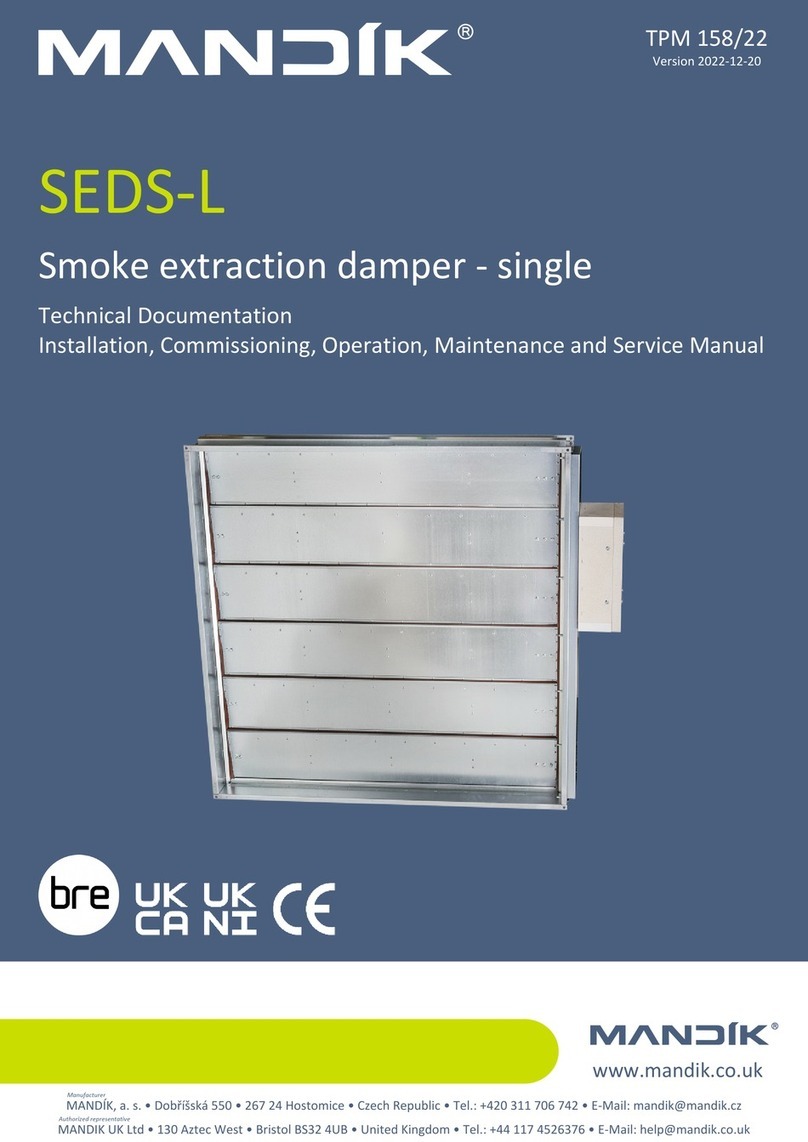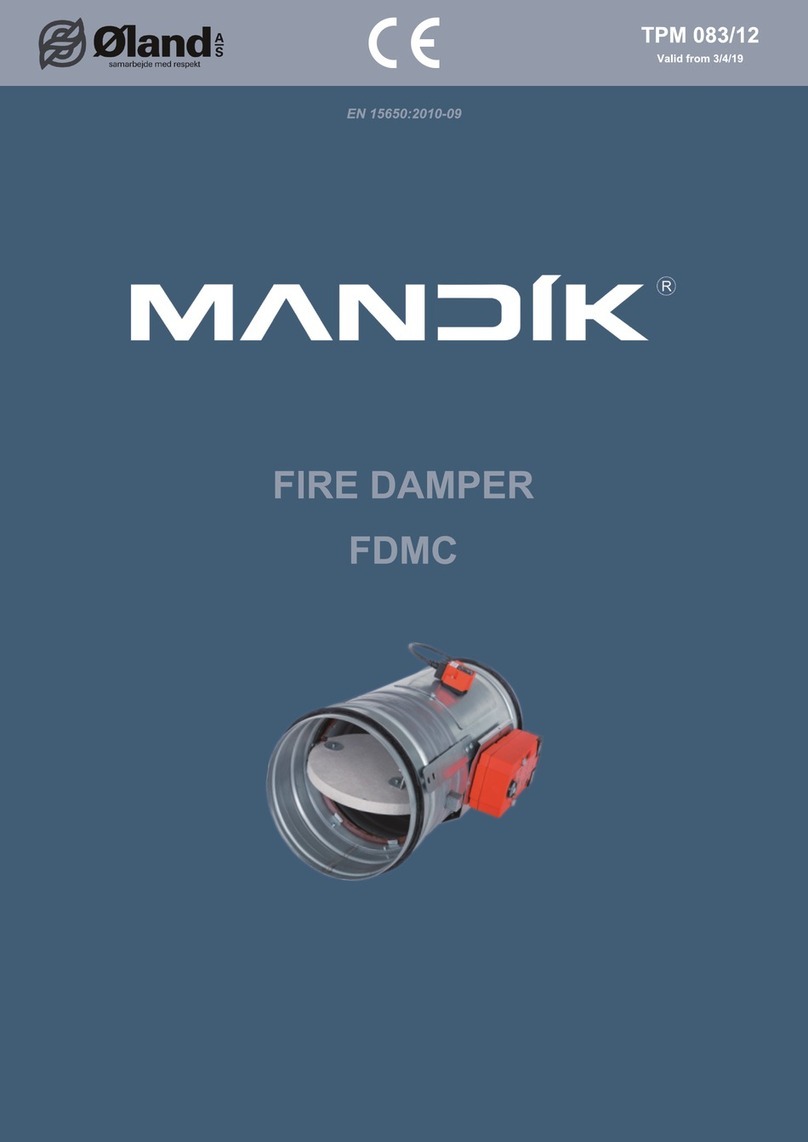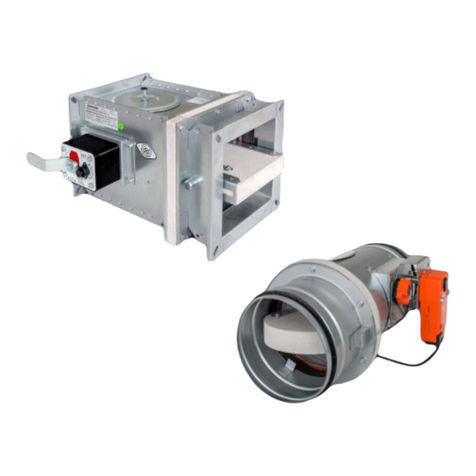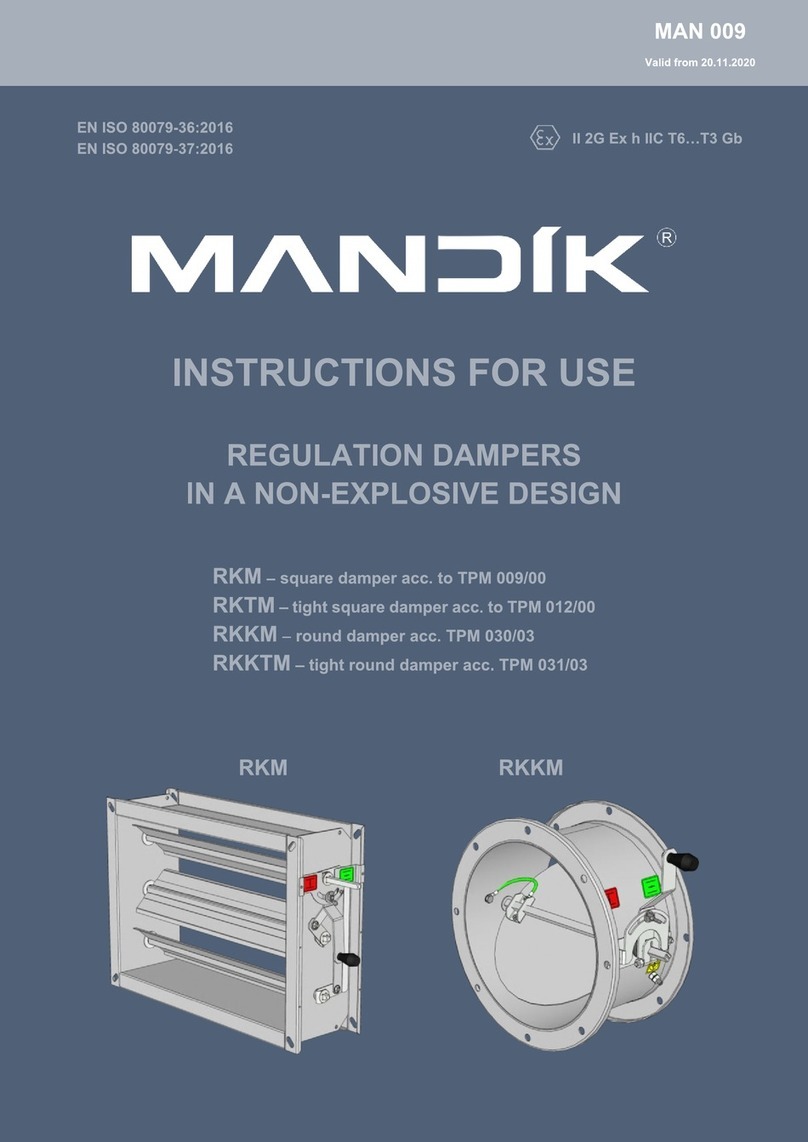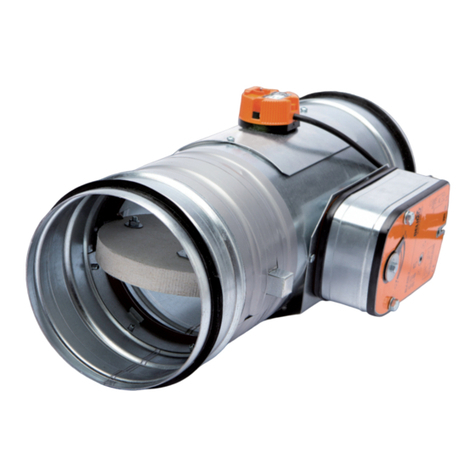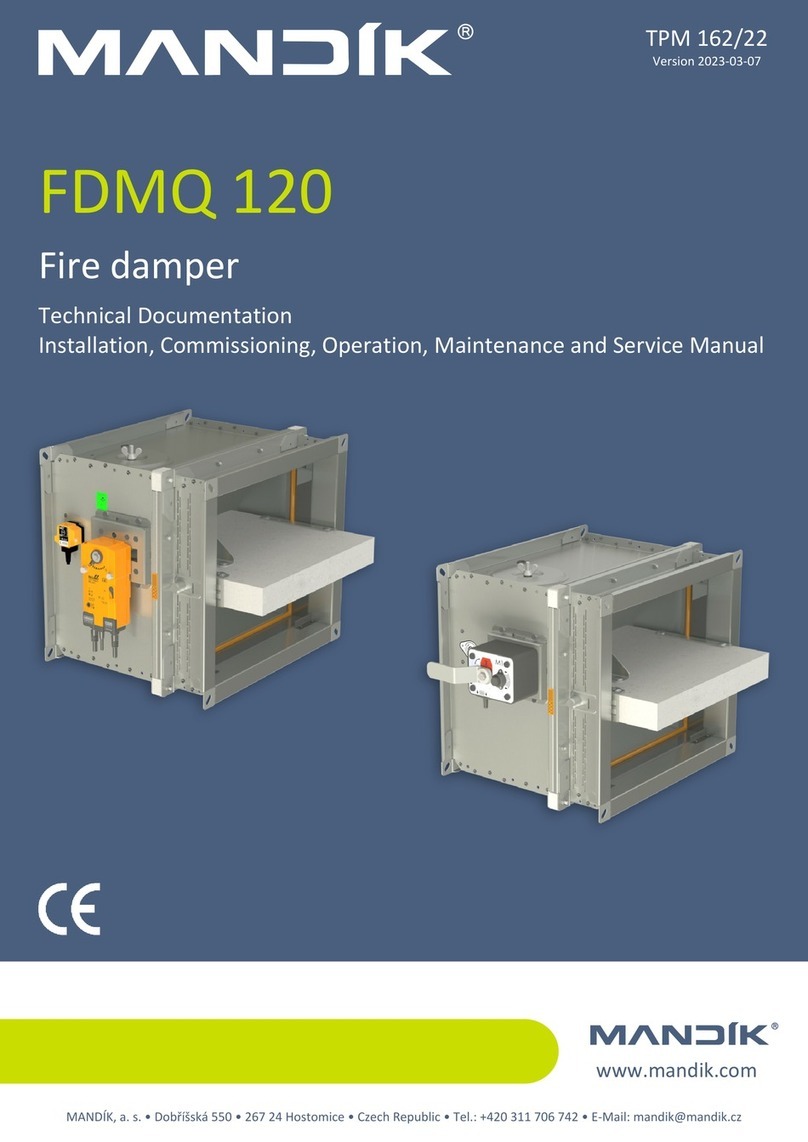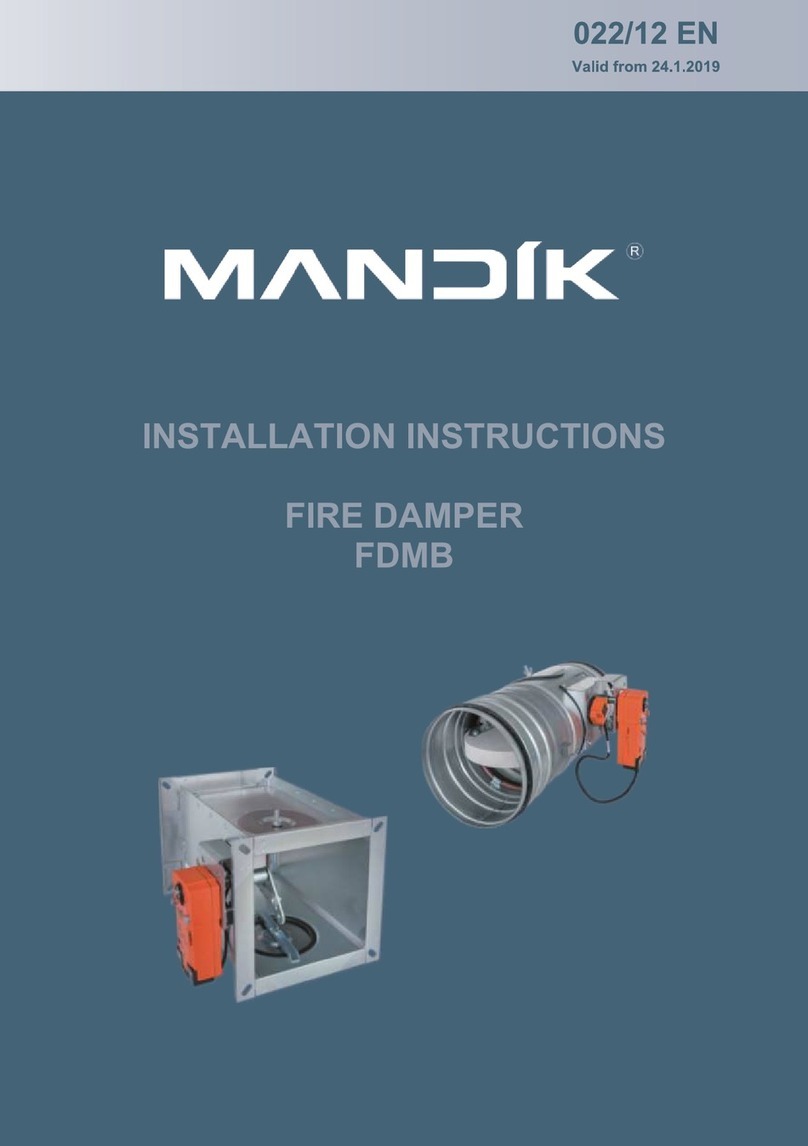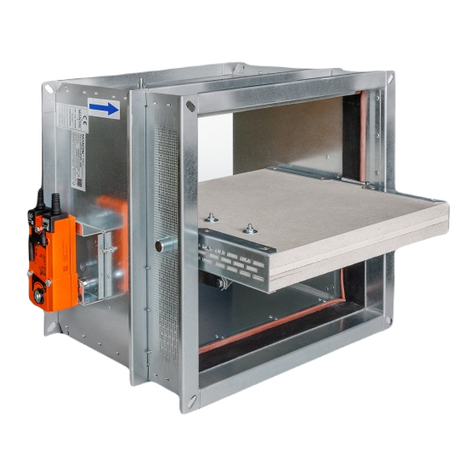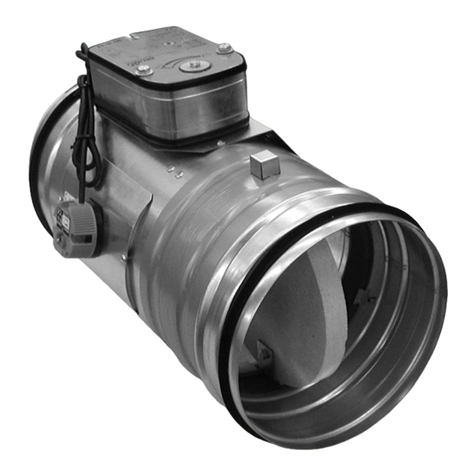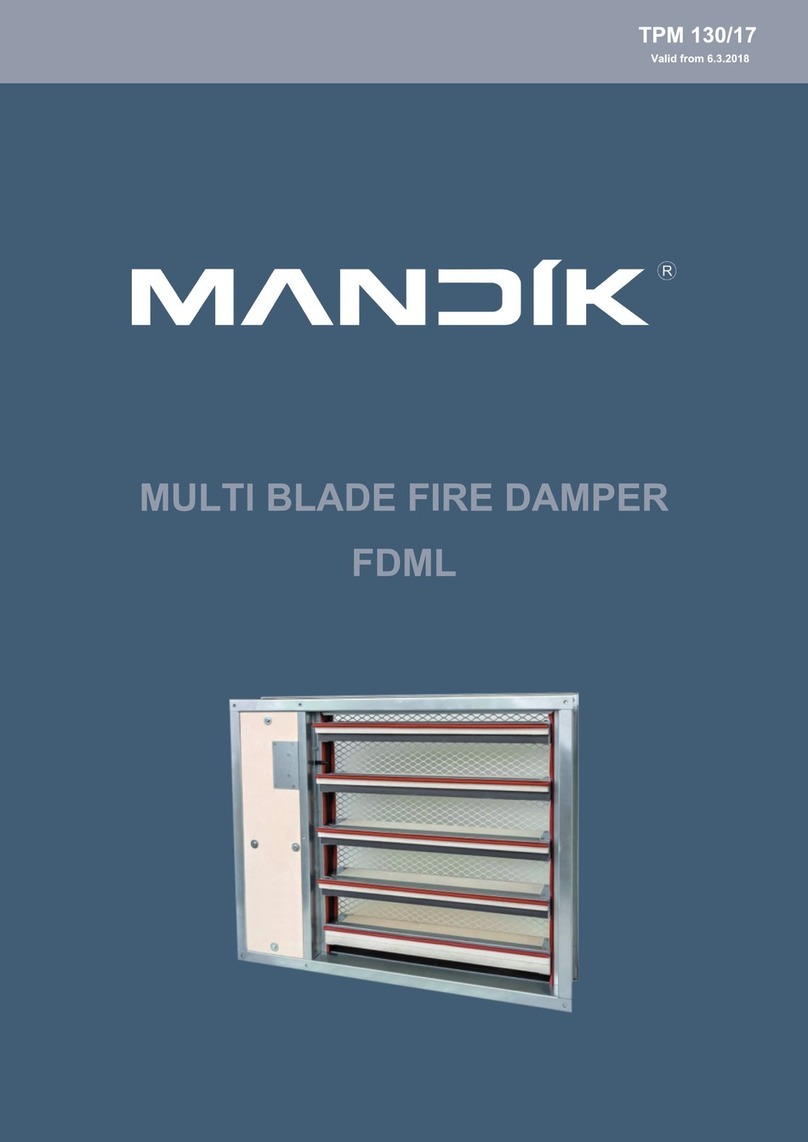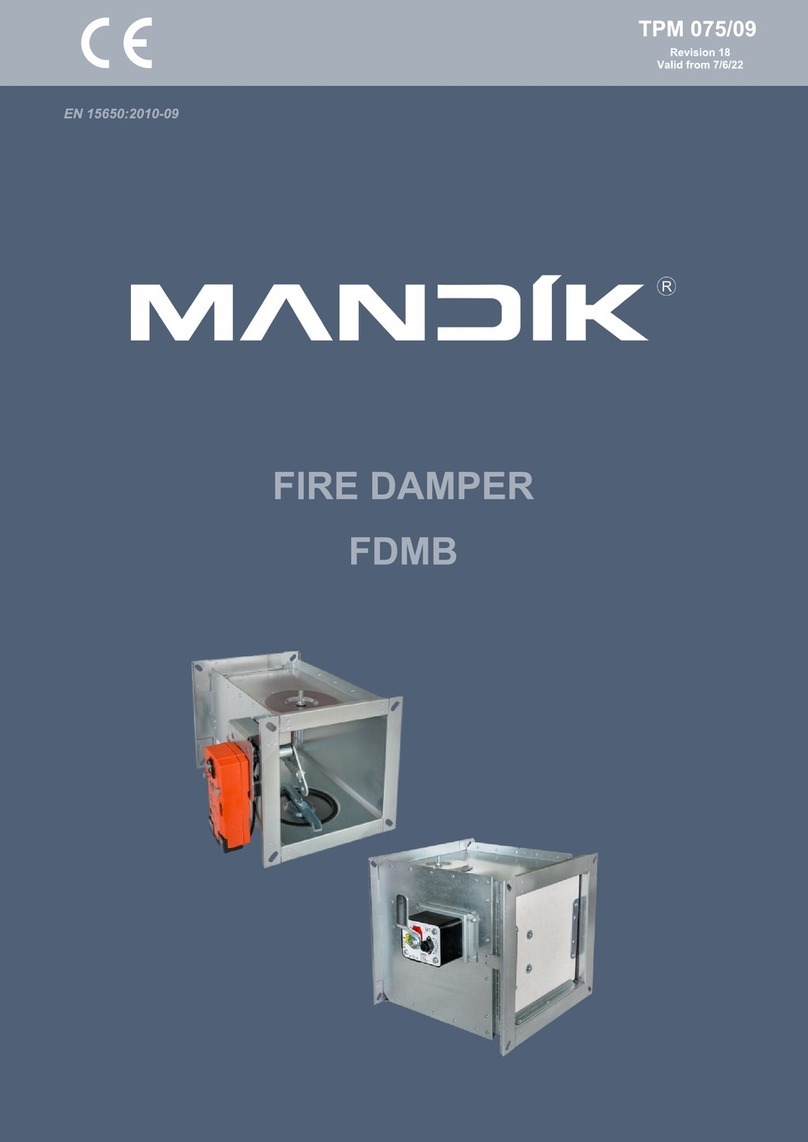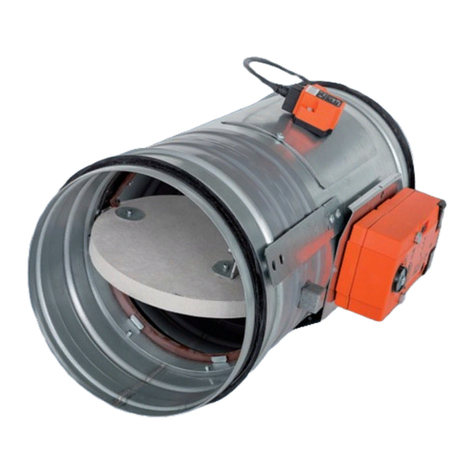
3
Fire dampers are shutters in ducts of air-conditioning devices that prevent spreading the fire and
combustion products from one fire segment to the other one by means of closing the duct in the points
of fire separating constructions.
The damper blade automatically closes the air duct using a shutting spring or an actuating mechanism
of back spring. The shutting spring is activated by pressing the start button or by the impulse from the
thermal fuse. The back spring of the actuating mechanism is started when the thermoelectric starting
mechanism BAT is activated, when the reset button on BAT is pressed or when the power supply to
the actuating mechanism is stopped.
After closing the blade, the damper is sealed with a silicon packing against smoke penetration. The
damper can be delivered with a seal without silicone at the customer's wish. At the same time, the
damper blade is embedded in a material which enlarges its volume due to increasing temperature and
hermetically seals the air duct.
The dampers have one inspection hole, as the shutting device and the inspection hole can be set to
the most advantageous position with respect to operation and handling of the control device by turning
the damper a little in case of the spiro model of the dampers.
Damper characteristics
• CE certified acc. to EN 15650
• Tested in accordance with EN 1366-2
• Classified acc. to EN 13501-3+A1
• Fire resistance EIS 60
• External Casing leakage class C, Internal leakage class 3 acc. to EN 1751
• Cycling test in class C 10000 acc. to EN 15650
• Corrosion resistant acc. to EN 15650
• ES Certificate of conformity No. 1391-CPR-2019/0161/O1
• Declaration of Performance No. PM/FDMR60/01/20/1
• Hygienic assessment of fire dampers - Report No. 1.6/pos/19/19b
Working conditions
Right damper function is secured under the following conditions:
a) Maximum air circulation speed: 12 m/s
Maximum pressure difference: 1200 Pa
b) The air circulation in the whole damper section must be secured as steady on whole
surface.
Operation of the dampers does not depend on the direction of air circulation. The dampers can
be located in an arbitrary position.
Dampers are suitable for systems without abrasive, chemical and adhesive particles.
Dampers are designed for macroclimatic areas with mild climate according to EN 60 721-3-3.
Temperature in the place of installation is permitted to range from -30°C to +50°C.
